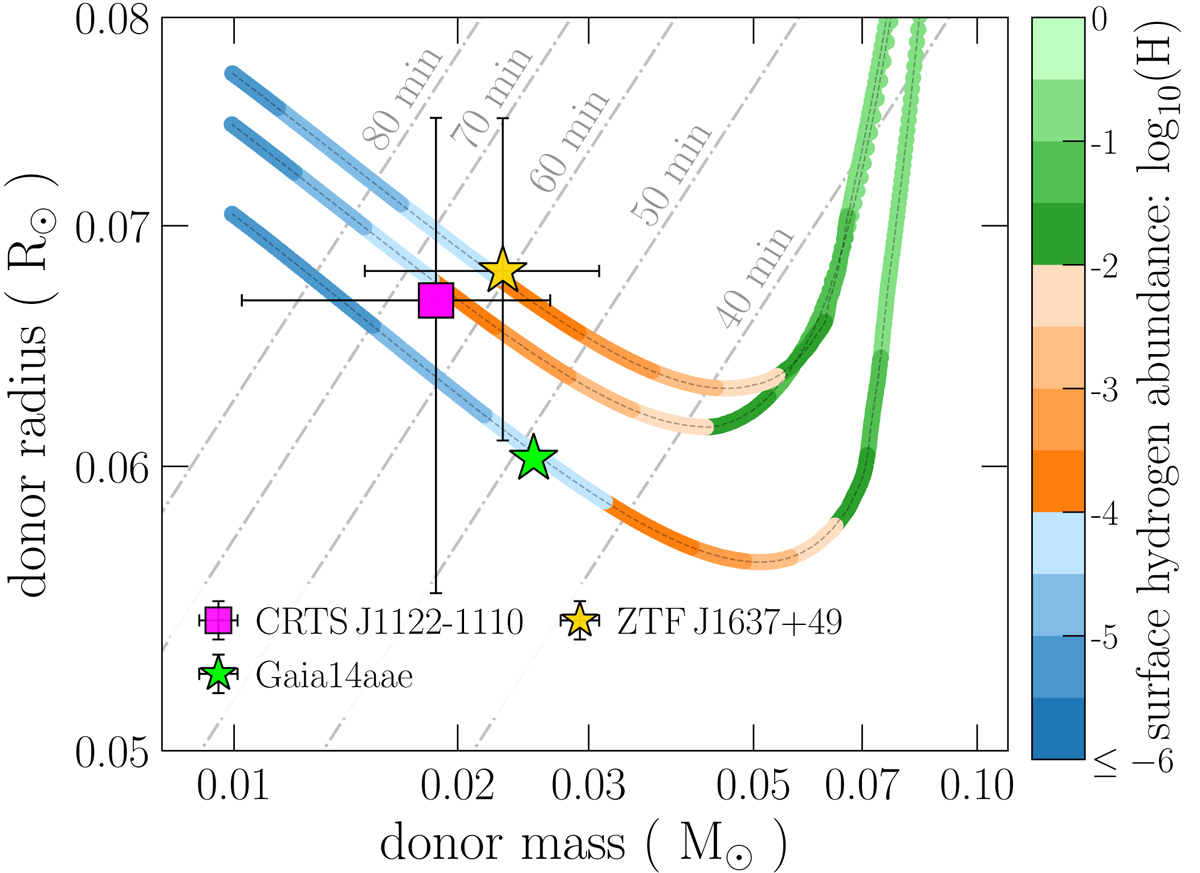Fig. 6.

Download original image
Three evolutionary tracks around the orbital period minimum that illustrate the evolution towards He CVs and subsequently to AM CVn binaries in the plane donor mass versus donor radius. These evolutionary sequences can explain the observed properties of the AM CVn binaries Gaia14aae (green star) and ZTF J1637+49 (yellow star) and the He CV CRTS J1122–1110 (magenta square), which lie within the transition region as shown in Fig. 5. These models have initial post-CE orbital periods, white dwarf and donor star masses, and mass of the helium core of the donor at the onset of mass transfer given by the following values: 1.14 d, 0.90, 1.15, and ≈0.061 M⊙ (top track); 2.495 d, 1.00, 1.00, and ≈0.043 M⊙ (middle track); and 1.01 d, 0.87, 1.16, and ≈0.070 M⊙ (bottom track). The only difference between the AM CVn binaries Gaia14aae and ZTF J1637+49 and the He CV CRTS J1122–1110 is the surface hydrogen abundance, which is still in the detectable regime for the latter.
Current usage metrics show cumulative count of Article Views (full-text article views including HTML views, PDF and ePub downloads, according to the available data) and Abstracts Views on Vision4Press platform.
Data correspond to usage on the plateform after 2015. The current usage metrics is available 48-96 hours after online publication and is updated daily on week days.
Initial download of the metrics may take a while.


